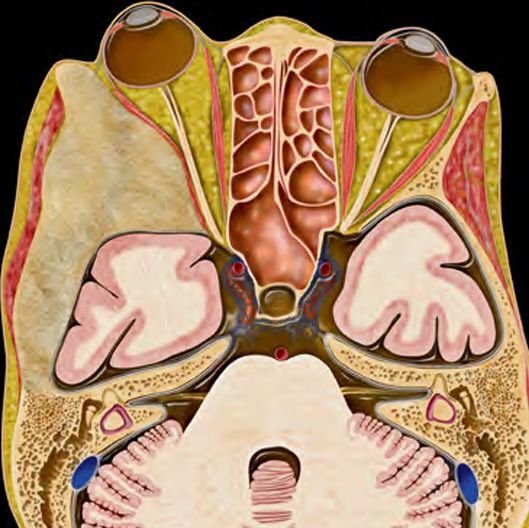Osteoma
Osteoma
Osteomas are benign, slow-growing bone tumors that most commonly arise from the skull and facial bones. Although more frequently seen in adults, pediatric skull osteomas are not uncommon and may be detected during routine examination or incidentally following minor head trauma. In most cases, osteomas are painless and cause no symptoms unless they grow large or are located near critical structures like the orbit or cranial nerves. In Bangladesh, where awareness of pediatric cranial tumors is limited and access to pediatric neurosurgeons is often delayed, Dr. Md. Nafaur Rahman is at the forefront of diagnosing and managing such conditions safely. At the National Institute of Neurosciences & Hospital (NINS) and Bangladesh Paediatric Neurocare Centre, children with skull osteomas receive the most advanced care with a focus on complete removal, safety, and cosmetic satisfaction. What is a Skull Osteoma? A skull osteoma is a benign bony growth that develops from the outer (or sometimes inner) layer of the cranial bones. It is composed of mature, compact bone and has a well-circumscribed, smooth, and hard structure. These lesions may occur: Externally, presenting as a hard scalp lump Internally, causing compression of brain tissue or sinuses (rare) Paranasal sinus osteomas, which may extend into orbit or cranial cavity Causes and Risk Factors Congenital or developmental origin in most pediatric cases Rarely part of genetic syndromes like Gardner’s Syndrome Sometimes associated with repeated minor trauma or inflammation No clear environmental risk factors in children Clinical Presentation Most skull osteomas are asymptomatic, particularly when small. However, parents often seek medical help due to a visible or palpable lump on the child’s head. Common signs and symptoms include: Painless, hard bony swelling on the scalp or skull Cosmetic deformity, especially in the frontal region Headache if lesion causes tension or pressure Rarely, visual disturbances, nasal obstruction, or neurological symptoms (if near sensitive areas) Gradual increase in size over time Common Locations Frontal bone (most frequent site) Occipital bone Parietal and temporal bones Skull base or orbital rim (less common but more clinically significant) May involve sinuses or extend intracranially in rare cases Importance of Early Diagnosis in Bangladesh In Bangladesh, scalp lumps in children are often ignored or treated with home remedies. Without proper imaging, osteomas can be mistaken for dermoid cysts, lipomas, or traumatic hematomas. Delays in diagnosis may lead to: Progressive cosmetic deformity Compression of nearby structures, particularly if near the orbit or skull base Surgical complications if left untreated and allowed to grow Diagnostic Workup 1. Clinical Examination Assessing location, size, hardness, fixation, and tenderness History of trauma, growth rate, or syndromic features 2. Imaging CT Scan: Best imaging modality; reveals dense, well-defined bony mass MRI: Used to evaluate deeper or intracranial extension X-ray Skull: May detect large, calcified lesions Surgical Management While small, asymptomatic osteomas can be observed, surgery is indicated if: The osteoma causes cosmetic concern There is compression of adjacent structures Lesion is growing progressively Suspicion of syndromic association (e.g., Gardner’s Syndrome) Surgical Approach Complete excision under general anesthesia Use of microsurgical techniques to minimize bleeding and scarring Cranioplasty may be performed for reconstruction Minimal incision techniques used for cosmetic purposes, especially in visible areas Postoperative Outcomes Excellent prognosis after complete surgical removal Low recurrence rate Minimal complications when surgery is done by an experienced pediatric neurosurgeon Improved cosmetic appearance and parent satisfaction Follow-up imaging may be done periodically to monitor healing and exclude recurrence Why It Matters in Bangladesh Osteomas may be underdiagnosed due to limited awareness among general physicians Families in rural areas may not seek help unless the lesion becomes large Dr. Nafaur Rahman’s multidisciplinary team ensures children receive proper evaluation, diagnosis, and cosmetic-safe surgery Affordable yet specialized pediatric neurosurgical care now available in Bangladesh through Bangladesh Paediatric Neurocare Centre Why Choose Dr. Md. Nafaur Rahman? Specialist in pediatric cranial tumors and scalp abnormalities Experience in managing complex osteomas, including those near the orbit or skull base Advanced imaging and surgical facilities at NINS and Neurocare Focus on cosmetic outcome, complete excision, and family-centered care Trusted by hundreds of parents across Bangladesh for ethical and expert pediatric neurosurgery Appointment & Contact Dr. Md. Nafaur Rahman Assistant Professor, Pediatric Neurosurgery National Institute of Neurosciences & Hospital (NINS) Chief Consultant, Bangladesh Paediatric Neurocare Centre 📞 For Serial & Consultation: 01912988182 | 01607033535 🌐 Website: www.neurosurgeonnafaur.com










